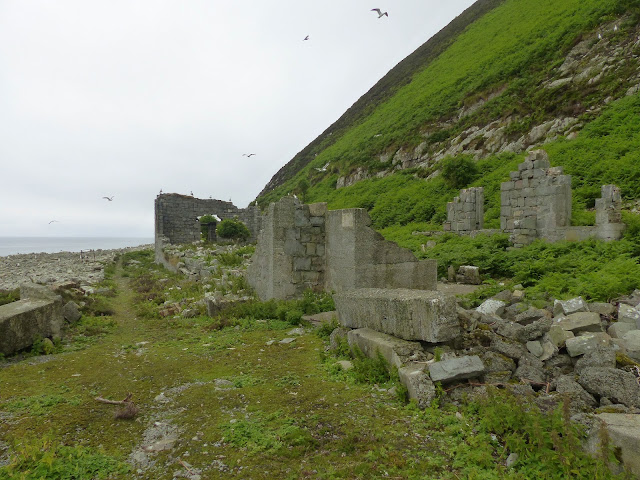We
are on our way back to County Antrim and you can see in the second image that Ailsa Craig Island is just disappearing behind us in the mist. Below is one of the group being shown the navigational aids. We certainy needed them today due to the heavy mist through the day although it lifted a bit as we sailed past the coast of Scotland on our return journey.
The Tiveragh
Fairy Hill (below)
Legend and lore has it that this very broad sided hill with steep
sides overlooking the small village of Cushendall in Northern Ireland is the
gateway to Tir na nOg. A place very well known locally to be haunted by faeries,
leprechauns, elves, and pixies … this giant hill is a natural fortress all in
its own and easily seen to be claimed as a stronghold by the fae. Fairy tales
mention many stories about it rising up on pillars during the twilight evening
with glimmering meriment of faeries frolicking and dining.
Many believe that the wee folk live in this hill that is accessed by a nearby cave. As the warning goes, if ye are mortal, regardless of how appeasing the faerie music may sound, if you wander within, you’ll never be seen again on this plane of existence. Time holds a whole different rhythm in Faerieworlds.
Many believe that the wee folk live in this hill that is accessed by a nearby cave. As the warning goes, if ye are mortal, regardless of how appeasing the faerie music may sound, if you wander within, you’ll never be seen again on this plane of existence. Time holds a whole different rhythm in Faerieworlds.
The skipper's wife told me that it was traditional for the children to roll their Easter eggs down this hill but only during daylight hours!
CLICK HERE if the video does not appear below.
We are nearly back to County Antrim and I do hope none of you were sea sick. Tomorrow finishes this series when I end as I started showing you Gannets but this time I photographed them on our journey back.
Many thanks for visiting and also to those who leave comments.



























































